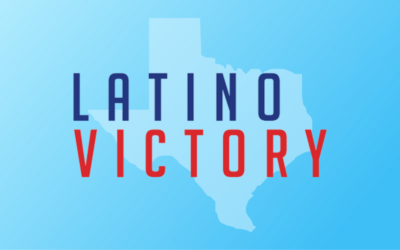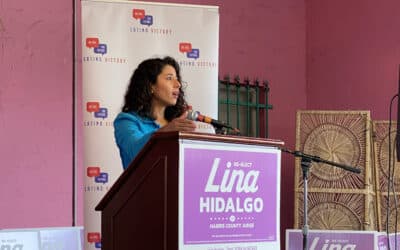Outsiders may still see Texas as predominantly white, Republican, and good ole’ boy. But that image, largely, is of a bygone era — to the chagrin of many in the GOP.
Texas is home to a rich diversity of people and politics. WalletHub named us the second most diverse state, based on several variables, in the nation, right behind California.
Houston, in particular, leads the state in an amalgamation of international cultures. And that diversity is one reason why the Democratic National Committee recently announced Houston would be hosting the third presidential primary debate.
“There is no better city, and no better state, that represents the future of our Democratic Party,” said Brittany Switzer, brand director at the Texas Democratic Party, which led the effort to bring the debate to Houston.
“The party is made up of young people and people of color, and Houston, and Texas as a whole, represents both of those things.”
In fact, the nation’s fourth largest city has already been home to several major Democratic presidential soirees for the 2020 election cycle.
Houston region
In the latest Houston area survey by the Kinder Institute’s Stephen Klineberg, Houston’s transformation into a multi-racial mosaic is a “demographic revolution.” It’s easy to see why. Hispanics today comprise 42 percent of the population while Blacks made up 19 percent.
Those figures have turned Houston into one of the largest minority-majority cities, as well as “one of the most ethnically and culturally diverse metropolitan areas in the entire country,” Klineberg wrote, noting that Fort Bend County had undergone similar changes.
Other communities, not just Hispanics and Blacks, have added to Houston’s incredible diversity too. According to the latest Census data, more than 145 different languages are spoken in Houston, including Vietnamese, Urdu and French.
To understand how that diversity is strengthening Houston, just look at the region’s elected leadership, now strongly Democratic. From lesbian Mayor Annise Parker to a Latina county CEO to the latest wave of 19 African American women elected to serve as judges, the city is busting with talent from all walks of life.
Unseen Texas
It’s not just Houston that’s changing. Since 2010, the state of Texas has gained 1.9 million Hispanic residents, outpacing the population growth of white residents at a rate of nine to one. Texas is home to the largest Black population in the country at 3.8 million people as of 2017. Their population growth rate is ahead of Whites and is only slightly trailing that of Hispanics. Asians are the fastest growing demographic in the state.
Already, Texas is one of a handful of minority-majority states. If these trends continue as expected, Hispanics are predicted to surpass Whites as the largest demographic in the state in by 2022.
The 2020 election
The question of course is, will enough of the diverse progressive base get out and vote next year? The jury is still out on that one. But there are at least two reasons for optimism: (1) In 2018, turnout increased substantially in the state compared to the previous midterm; and (2) 2020 is presidential election year with much reviled Donald Trump on the ballot, serving as a natural turnout elixir.
Fernando covers Texas politics and government at the Texas Signal. Before joining the Signal, Fernando spent two years at the Houston Chronicle and previously interned at Houston’s NPR station News 88.7. He is a graduate of the University of Houston, Jack J. Valenti School of Communication, and enjoys reading, highlighting things, and arguing on social media. You can follow him on Twitter at @fernramirez93 or email at fernando@texassignalarchive.com




